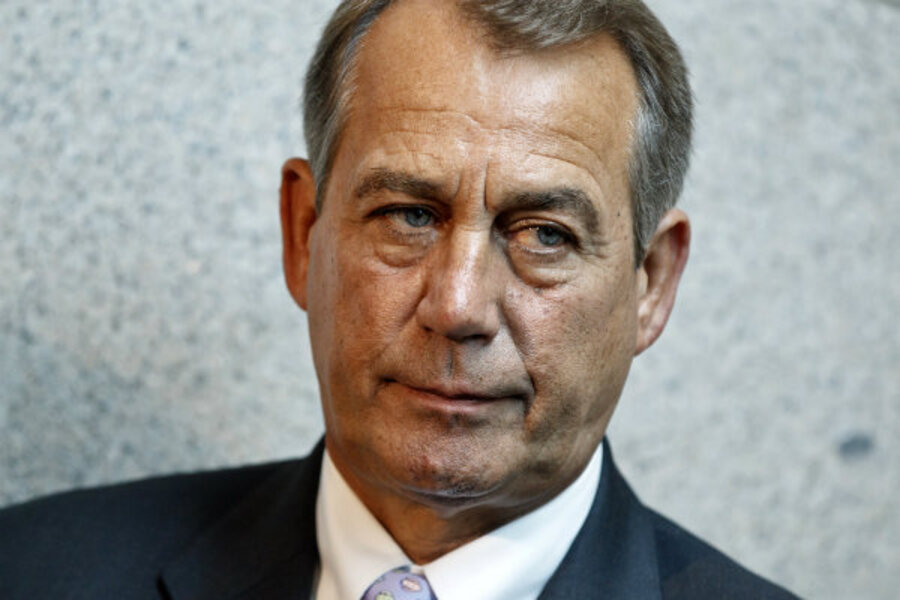This 4th of July: The dawn of a new 'independents' day
Loading...
| Wheaton, Ill.
This July 4th, as Americans celebrate Independence Day, a different type of independence is growing in size and influence – political independents, those voters who choose not to align with either major party.
A recent Pew Research Center poll captured headlines with its report that the divide between Democrats and Republicans is widening into a significant gulf. That's indeed noteworthy, but the data reveal an equally important political development that risks getting overlooked. A record-high 38 percent of Americans now describe themselves as independents.
That's more than those who align with Democrats (about a third) or Republicans (about a quarter). The shift is most striking among younger generations – 45 percent of Millennials and 42 percent of Generation Xers.
What might this rise foretell?
Although the numbers suggest there is political space for a third party to succeed, the American political system provides strong incentives for voters and political elites to align with two, and only two, parties.
Most elections in the United States allow only one winner, and whoever receives the most votes wins. If many parties competed for a single seat, a person could win office with 20 percent, 15 percent, or even fewer votes, leaving almost everyone dissatisfied.
At the presidential level, if more than two candidates seriously contend the general election, the chance of anyone winning a majority in the Electoral College narrows. And strong third-party candidates are often considered "spoilers." Many Democrats still grumble over Ralph Nader "stealing" the 2000 election from Al Gore, while many Republicans complain about Ross Perot helping Bill Clinton in 1992.
In this primary season, the grass-roots group Americans Elect attempted to make a way for a nonpartisan presidential candidate. It failed miserably. No candidate earned enough support to cross the threshold to nomination.
What are the options for independent candidates, if not a third party? Our system is stacked against them, too. Ballot-access requirements, major fundraising networks, and winner-take-all elections offer significant advantages to candidates with party backing. Primaries in most states exclude independent voters or force them to choose sides.
Independent and third-party candidates made it onto the ballot in only 18 percent of state contests between 2000 and 2009, winning about 2 percent of the races they entered.
Independents are most likely to succeed when they are tied to a party (like Sen. Joe Lieberman, the career-Democrat who won reelection as an independent after losing a primary) or are in idiosyncratic political places like Maine and Vermont. Independent US Senate candidate Angus King is capturing media attention and may very well win his senatorial bid in Maine; but his candidacy is an outlier, not the bellwether.
Both parties need independent voters to win. But have the parties forgotten this?
Campaign strategists have a simple recipe for success. They divide voters into three camps: ours, theirs, and up-for-grabs. Winning campaigns pay just enough attention to their committed voters to keep them happy and get them out to vote; they avoid voters who are solidly in the opponent's camp, and they focus most of their efforts on those most likely to be persuaded – like political independents.
When forced to choose between parties, most independents will pick a side. But the lack of willingness to align with a party suggests the parties have an image problem.
Consider this trend: Independents have surged and the parties have grown more polarized, yet underlying ideological views have changed little. In Pew Survey polls from 2000 to 2012, between 35 and 36 percent said they were conservative; about the same amount said they were moderate; and 18 to 22 percent said they were liberals.
The biggest defections appear to be from the Republican Party, as the recent rise in numbers of independents over the past decade has come almost entirely from conservatives and moderates (including some Democrat moderates).
Parties are not particularly popular, even in their own ranks. A majority of Democrats and those who lean Democratic say their party is doing only a fair or poor job of standing up for its traditional positions. Republicans and those leaning Republican are even more dissatisfied.
The growing lack of party allegiance and the high levels of dissatisfaction are trends that current party leaders ignore at their peril.
One need only look at the changing control of Congress over recent elections to see what happens when voters grow dissatisfied. In 2006, voters threw out Republicans; in 2010 they gave House Democrats the boot. Voter anger could flip control again.
Republican and Democratic party elites should be running scared. Polling data suggest and history confirms that American voters prefer broad-based parties that govern from the ideological middle, not from the extremes.
Whichever political party does the math first and shifts to accommodate more moderate voters will be well positioned to survive and even thrive in coming decades.
Amy E. Black is associate professor of political science and chair of the department of politics and international relations at Wheaton College in Wheaton, Ill.







